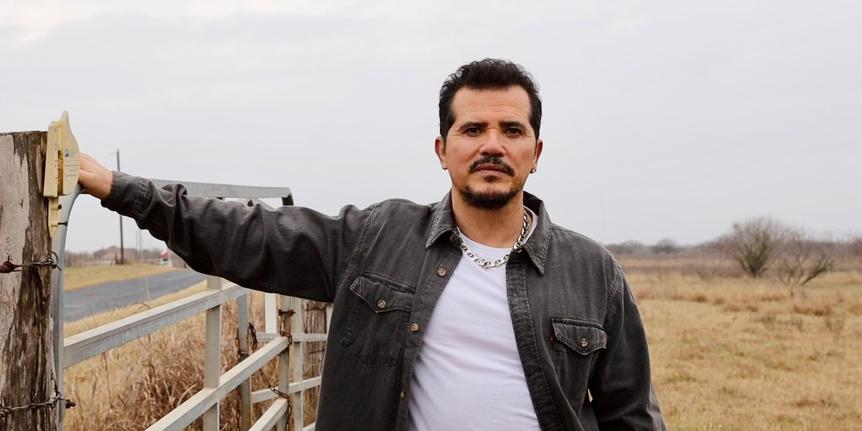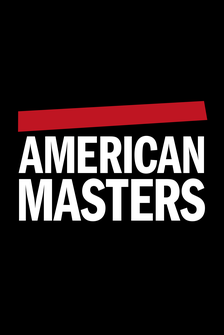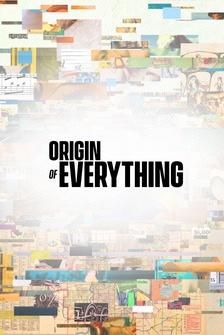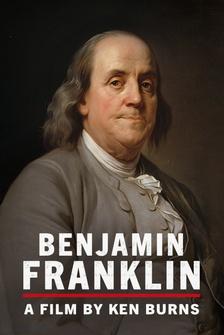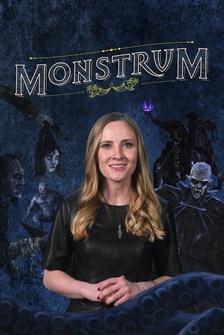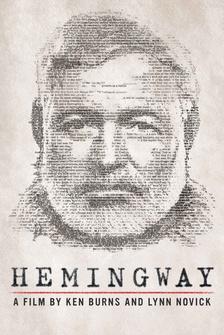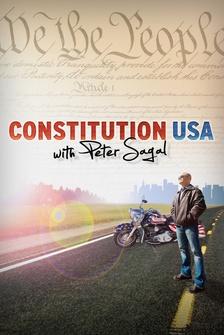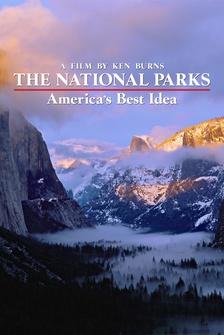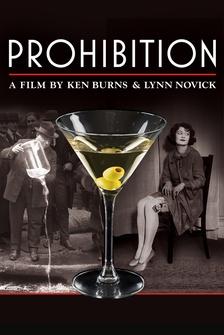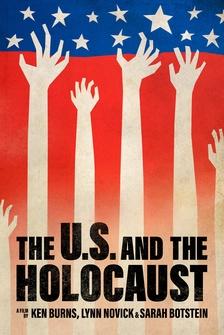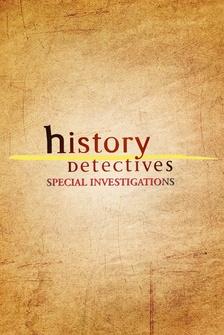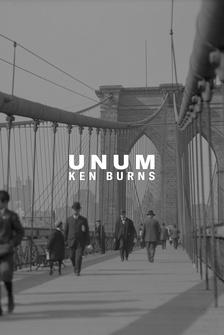You know, when I was growing up in Jackson Heights, Queens, I learned the same history that they taught kids all over America.
That George Washington cut down his cherry tree, that Ben Franklin flew his kite, and Abe was honest.
Guess what was missing?
Us, the Latino contributions to this country.
Colón: You can't have a history book about the United States without considering the histories of all of the Latino communities.
Most of the history we're still taught is from the point of view of the conquistadors who tried to wipe out any trace of advanced indigenous cultures.
As a kid, that lack of inclusion in history textbooks made me feel invisible.
I think it's essential that we set the record straight about Latinx history.
Well, with the strike and with the boycott, we were trying to give farm workers basic human rights.
Ortiz: We don't just make contributions to U .S.
history, we have changed U.S. history.
Latinos are the most highly decorated ethnic group in U.S. military history.
People tend to forget that Latinos were here long before the United States existed.
Colón: If we consider the richness of our past, we're able to reconstruct a much richer picture of how our cultures came to be.
It's important to not underestimate the people that came before us and what they knew.
Leguizamo: They invented life-saving medical practices and engineered incredible infrastructure.
They also calculated the movements of the planets and they wrote it all down in their sacred books.
It's as epic as any of the great wonders you've learned about in history class.
This is the story from the point of view of the people who were already living in the Americas.
Carrasco: It is really important for Latinos to know and for other people to know about Latino roots.
Leguizamo: Imagine how others would see us if they knew our rich history.
Imagine how we would see ourselves if we knew our own stories.
We're going to fill in the parts of our history that were lost, all the way from the ancient Olmecs to the Latinos who helped build this great nation.
I know that's a lot of ground to cover, but don't worry, because I got you.
♪ This program was made possible in part by... Narrator: To bring the history in this series to life, the following program includes images generated by AI tools.
To learn more about the process of developing these images, visit pbs.org/historia.
This is my chance to dig deep on the real history of Latinos.
Our history is a complicated one because Latino identity isn't always well-understood, even by ourselves.
It means you're descended from the original peoples of the Americas, because once Europeans arrived to the New World, they mixed with the native populations and enslaved Africans, and the first Latinos were born.
Of course, we come in every color and diverse flavor.
Some of us are Afro-Latino or Indigenous Latino.
Some identify as "Latinx", but "Hispanic" refers to native Spanish speakers.
Today, hundreds of millions of people across the globe share this identity, but our roots go back thousands of years.
Between 2000 BC and 1492, the peoples of the Caribbean, Central and South America built fantastic cities.
Fernández: The sophistication in the arts and architecture of these massive cities that were bigger than European cities.
When the Spanish arrived here, they found civilizations that were in many ways more advanced than where they came from.
But in order to justify colonizing and converting the natives and stealing their wealth, the conquistadors created a narrative about barbaric cultures that had to be subjugated.
Anything that didn't fit this narrative was destroyed.
♪ Fernández: We know, we tend to start Latin American history with Columbus.
I always start in my classroom with the Taíno people.
It's important to know who were the original people of the land that Columbus first encountered.
Leguizamo: Today, we use the word "Taíno" to refer to all the indigenous people of the Caribbean, but the fact is, there were many different political and cultural groups living throughout the region.
Moya: The Taíno people were originally from the mouth of the Orinoco River in Venezuela, and they were able to move into the Caribbean Islands, going to Puerto Rico, then Hispaniola, what is Dominican Republic and Haiti today.
It's the only time that we know of so far where ancient seafarers were moving out of the continent, losing sight of the land behind them to cross hundreds, even thousands of nautical miles and settle into newly inhabited lands, in this case, islands.
Researchers have suggested that there could have been anywhere between 70,000 to 100,000 indigenous peoples living in the Caribbean before contact.
♪ We often think of islands as paradise, a beautiful and warm place where there are no stressors, but eking out a subsistence for thousands of years on an island is really hard work.
You have to be able to manage agriculture in a place where hurricanes are extremely common.
You need to be able to navigate effectively the challenging ocean currents that are still challenging to navigate today.
You need to have trading partners across different islands and speak different languages in order to do so.
They had intensive agriculture, which allowed them to feed a growing population both within as well as between islands.
The Indigenous people of the Caribbean have so many awesome cultural achievements that I feel I get lost when we talk about them because we often talk about them in the worst possible moment of their history, which is, of course, contact with Europeans.
When Columbus first set foot in the New World, that was the beginning of the end for many indigenous cultures.
Let's name it for what it really was.
Three boats and 86 men landed in 1492, bringing with them billions of European germs in what turned out to be the apocalypse.
Now, the first people to encounter Columbus in the New World were the Taíno.
Sadly, the Taíno were also the first to suffer this civilization-ending devastation.
Columbus arrives to this landmass.
He doesn't know where he is, and actually, one of his three ships runs aground and is destroyed.
The people living on that island, they come out to help him, and they help them load all the people on their canoes.
As the Spanish tell it, they gave them their best houses for them to stay and to store their goods.
That was the first encounter.
Leguizamo: We never even stop to think about how these natives lived before these ships arrived.
When history is written by the victors, we miss out on the perspective of the oppressed.
Columbus: "They willingly traded everything they owned.
They have no iron.
"Their spears are made of cane.
"They would make fine servants.
"With 50 men, we could subjugate them all "and make them do whatever we want."
Leguizamo: Contrary to popular belief, he did know the Earth was round, but he didn't know that there were two entire continents and millions of people between Europe and Asia.
When he accidentally docked in Hispaniola in 1492, mistaking it for India, he quickly took the opportunity to begin enslaving the native people who lived there, stealing their land and resources, brutalizing their families, and spreading European diseases.
I don't think he was neither particularly brave nor particularly visionary.
You have to remember, before the Portuguese and the Spaniards came to the Americas, they had gone to the Canary Islands, they had gone to the Azores, so they were pushing the boundaries.
If it hadn't been Columbus, it would have been any other leader of an expedition.
So it was going to happen.
There was nothing special about Columbus, really.
In my opinion, the only thing that was exceptional about Columbus was his cruelty, because he quickly became known for enslaving, brutalizing, and terrorizing the Taínos.
Columbus's men even documented that he captured Taíno women and gave them to his crew to be raped.
Life under Spanish rule was a nightmare.
The indigenous people of the Caribbean were the first to experience the brunt of European colonization and the atrocities that came with that.
And of course, there was also forced displacement and enslavement.
So it really amounts to something very close to a genocide.
De las Casas: "It was a general rule among Spaniards "to be cruel.
"Not just cruel, but extraordinarily cruel, "so that harsh and bitter treatment would prevent "Indians as daring to think of themselves "as human beings "or having a minute to think at all.
"So they would cut an Indian's hand "and leave them dangling by a shred of skin, and they would send him on saying, 'Go now, spread the news to your chiefs.'
"They would test their swords and their manly strength "on captured Indians "and place bets on the slicing off of heads "or the cutting of bodies in half with one blow."
Leguizamo: When we tell the real story of Columbus, that's how we challenge our colonial mindset in the present because the truth is the Taíno were not frightened or awed by these European sailors.
Fernández: There was a lot of rebellions against Columbus.
It was utter chaos.
The Taíno were not a passive people.
There were five different kingdoms on Haiti alone, and some of them were allies and some of them were enemies, and they were experienced warriors.
And in fact, when Columbus and his followers were waging war on them, they fought back.
Leguizamo: Each chiefdom was ruled by a leader called a "cacique" or chief.
Notably, women could become caciques as well as men, and many fought in battle alongside their male relatives.
Agüeybaná II was one of the most powerful caciques in the whole Caribbean at the time of the European invasion.
He had seen firsthand the Spanish arrival in Puerto Rico in 1493, and he devoted his entire life to the fight for his people and their land.
We know that Agüeybaná was capable of uniting a large alliance of indigenous peoples.
He united to fight against the Spanish, and I think that tells us something about leadership at this time, and it also tells us something about pan-Caribbean unity in the face of oppression.
The Taíno fought back.
Let's get rid of those stereotypes of the passive Indian.
Colón: There are historical documents that tell us that in 1511 the Taíno people of Puerto Rico mounted a huge resistance against the Spanish that included burning down the Spanish city of Caparra.
It included raiding many towns, and also that they worked together with indigenous peoples from other islands, not just from Puerto Rico, but once African peoples arrived into the Caribbean, they often united with indigenous people to fight.
We know that Spanish authorities were so afraid of this that they were writing to the crown asking for reinforcements to be sent, or the whole colonial enterprise would have been threatened.
And I mention that because it really goes against this idea that these people never resisted, that they never fought back.
And because we think of them that way today as docile, we tend to devalue their contributions to our heritage.
Leguizamo: But here's the thing.
Because the Taíno stories weren't preserved, historians have long relied on the writings and narrative from the Europeans, which painted the Taíno as simple and backwards.
Fernández: It's absolutely not true that the native people lost because they had inferior weaponry.
That's absolutely not true, and it just feeds into these hierarchies of European superiority.
The advantage that the Spaniards had in terms of conquering the Native American was immunity to smallpox.
It turns out the conquistadors' best weapons were not their guns and steel.
No, instead it was their bodies, which carried billions of deadly germs with them.
It was dozens of pandemics, one right after the other, mainly smallpox, measles, and typhus, that almost wiped out the native populations.
♪ There's no question about it because the Spanish friars who wrote back to the king of Spain said, you know, "I'm trying to convert all these people, and they're just dying all around me."
Motolinía: "As the Indians did not know the remedy "of the disease, they died in heaps like bedbugs.
"In many places it happened "that everyone in a house died, "and as it was impossible "to bury the great number of dead, "they pulled down the houses over them "so that their homes became their tombs."
The statistics speak for themselves that the estimates are that there were about a million inhabitants of Hispaniola in 1492 when Columbus and his followers arrived.
16 years later, in 1508, 94% of them were gone.
94%.
When I think about what the indigenous people lost, it's almost too much for me to wrap my head around, let alone my heart.
Imagine 94% of your community gone.
Empty homes, empty towns, almost all of your friends and family gone.
How do you keep going after such a loss?
That's why we should never forget the genocide that was inflicted on our ancestors.
We need to celebrate the people of Taíno heritage who still exist today.
Columbus committed so much violence, rape, and murder that he was eventually arrested for his violent atrocities.
The governor of Hispaniola arrested him on mismanagement and brutality charges against the Taíno and his own soldiers, and then had him forcibly returned to Spain where he was stripped of his noble titles.
And yet we still celebrate Columbus Day.
Don't get me wrong, we're starting to see change.
Indigenous Peoples' Day is now replacing Columbus Day in many cities and states across the U.S. Colón: Indigenous ancestry is a central part of Puerto Rican identity to this day.
In fact, we call ourselves "boriquas", and boriqua is the Taíno word.
The idea that the Caribbean's indigenous peoples disappeared soon after European contact and that they contributed very little to our culture and our biology today.
But when we look at the DNA that people still carry in them, that forces us to reconsider this extinction narrative.
In fact, we are connected culturally, biologically, and also genetically to these people.
The history of the New World civilizations isn't just oppression and pain because our story is so much bigger than that.
And our story includes more than just the Taínos that had the bad luck to be the first ones to meet Columbus.
At the time of Columbus's arrival, indigenous civilizations thrived throughout all of Southern and Central America, including what we know now as modern-day Mexico.
It all starts here.
The Olmec, the Taíno, the Maya, the Inca, the Aztec, these were the OG civilizations of Latin America, and their great-great-grandkids to the Nth degree would become the Latinos of today.
♪ First we have to pay homage to the "madrina", or godmother of all ancient Mesoamerican cultures, the Olmecs, whose culture was old when Rome was young.
Carrasco: There existed in Mexico what is called the mother culture of Mesoamerica, the Olmecs.
Leguizamo: The Olmecs had already formed a complex, wide-ranging civilization, all before Buddha was even born.
They're considered the earliest major Latin American civilization.
So many of these things, the numerical systems, the writing systems, the calendar, were created by the Olmecs.
Carrasco: Over the last 100 years, a number of archaeologists sort of accidentally discovered these huge heads.
Some of which weighed 9 tons, taller than a man.
Why the great heads?
Well, nobody really knows, but it seems to me what the big heads represent is some sort of awareness of the importance of intelligence.
The materials that they used for their monumental architecture were brought from great distances.
Things that were very heavy, very difficult to transport.
They developed some kind of transportation system, maybe through the waterways, to take these stones, float them down close to these ceremonial centers, then transport them across logs or some way of rolling them into the ceremonial center.
And then the sculptors went to work.
Do you play basketball?
Well, without the Olmec and their rubber balls, you would never have heard of Kobe Bryant.
People think rubber was invented by Charles Goodyear in the 1840s, but he was building off the tech originally invented by the Olmecs 3,000 years ago.
In Mesoamerica today, people still play the ballgame.
So the ballgame is a great element of the Latino ancestors.
Leguizamo: The Olmec established several great cities throughout their empire, but the greatest jewel of all pre-Columbian Mesoamerica was a mysterious city called Teotihuacán.
Now, most of us are taught to think of Greece and Rome as the cradles of Western civilization, but the ancient peoples of Central and South America had sophisticated cultures hundreds of years before Europe.
And I'm here at the real cradle of Western civilization, Teotihuacán, where there's evidence of diverse, powerful, intelligent cultures dating back to 400 BC.
So the great capital of Mesoamerica was Teotihuacán.
And it comes into being as an urban center.
We really are in the first century of the Common Era, and it rises to be the great imperial center.
Teotihuacán is the symbol of this great achievement of building some of the first cities in the world.
And Mesoamerica, Mexico, as well as Peru, are two of the areas where people invented these first cities without any influence from other cities.
The others are Mesopotamia, northern China, Egypt, and the Indus Valley.
And this is really important for Latinos to know and for other people to know about Latino roots.
Leguizamo: All these places that today we'd consider Third World turns out were actually the places where civilization began.
For instance, the pyramids of Teotihuacán were built around the same time as the Roman Colosseum.
Archaeologists estimate that Teotihuacan had up to 200,000 inhabitants at its peak.
For comparison, London's population didn't even break 100,000 until the 16th century.
So one of the wonderful things that archaeologists have been able to find is that Teotihuacán was a multi-ethnic city.
The things that brought people of different ethnicities from all over Mesoamerica to Teo are the same things that draw people to cities today.
Better infrastructure, bigger ideas, and of course, a shot at a better life.
Newscaster: Mexico's famed Teotihuacán archaeological site still holds many mysteries for historians.
But the answers they seek may lie below the surface.
Leguizamo: We didn't dig the subway tunnels of New York until about 100 years ago.
2,000 years earlier, the original scientists and rulers of Teotihuacán built a series of tunnels dozens of feet beneath the ground without the use of machinery or power tools.
These tunnels connected chambers holding treasures long forgotten until they were unearthed in 2003.
It was a groundbreaking discovery that changed our perception of the civilization that once thrived here.
And I'm here to meet the man who uncovered these wonders, archaeologist Sergio Gómez.
¡Qué placer!
¡Mucho gusto!
¿Dónde estoy?
Estamos en frente del Templo de la Serpiente Emplumada, donde hace varios años descubrimos un túnel que nos conduce hasta casi el centro de la pirámide.
Es probablemente uno de los descubrimientos más importantes que se han hecho en los últimos años en Teotihuacán.
¿Y por qué dices esto, por qué?
Tenemos una gran cantidad de objetos importados de la zona maya, muchas cosas increíbles traídas desde Centroamérica.
Y también tenemos pequeños fragmentos de turquesa importada desde Arizona.
Leguizamo: This monumental discovery of turquoise all the way from Arizona proves that the people of Teotihuacán had significant trade relationships with societies as far away as Arizona to the north and Honduras to the south.
¿Qué tan profundo es?
Vamos a bajar 15 metros.
¿Es peligroso?
Es muy peligroso.
No puedes tocar las paredes, que es muy venenoso.
Pero vamos a entrar con mucho cuidado, sin tocarlo.
Sí, tranquilo.
Un casco para tu precaución.
Con precaución.
Vamos a pasar.
Leguizamo: To put that into context, their network extended almost as far as the Roman Empire at about the same time.
Leguizamo: ¿Esto qué es?
Gómez: Ese es el hueco por donde yo baje la primera vez.
Al fondo encontramos cuatro ramos de flores perfectamente conservados.
¡No!
Gómez: Increíble.
Leguizamo: Increíble.
Leguizamo: As we get further into the tunnel, I can feel how deep I am below the surface of the earth.
Gómez: Estamos llegando a la parte final del túnel, donde encontramos tres grandes cámaras.
La percepción que tienen del tiempo es distinta.
No importa si no la viste terminada.
La proyectaste, y tal vez tres o cuatro generaciones después lo terminaron.
Pero nosotros tenemos mucha prisa.
En la actualidad queremos hacer las cosas muy rápido.
Para ellos era diferente.
Todo el universo gira en torno a este eje.
¿Cómo hicieron ellos sin la tecnología?
¿Quién puede venir aquí?
¿Todo el mundo, el público?
Este es un lugar muy sagrado, un lugar muy delicado, y nunca va a ser abierto al público.
Y por eso me da gusto que hayas venido.
Sergio, thank you for bringing me here.
I feel very honored, and it's so special to see this sacred space.
Leguizamo: We have to stop centering the European version of history and reconsider our own past.
Take the incredible inventions and medical knowledge of South America's greatest empire, the Inca.
♪ The Inca people gained control of the region and established their empire in 1438.
The Inca's extending from modern-day Colombia, Ecuador, Peru, Bolivia, central Chile, and parts of Argentina.
Leguizamo: They ruled for nearly 100 years before Europeans reached their territory.
The Inca were also extremely organized.
They had a system of recording using these knotted cords called "khipus".
They divided up their people, they had censuses.
They had labor requirements.
That was the way they supported a massive agricultural economy.
Leguizamo: Khipu are collections of knotted strings which the Inca encoded with meaning to keep records and record data.
Using different string colors and weaves, the khipu makers could have created over 1,500 separate units of information.
And in comparison, the Sumerians of Mesopotamia, modern-day Iraq and Iran, worked with fewer than 1,500 cuneiform signs, and Egyptians had fewer than 800 hieroglyphics.
Even after the Spanish formally colonized these lands and set up their own rules of law, native people still found ways to challenge European supremacy.
Carrasco: The Spanish courts, they were always demanding what becomes very important for immigrants today, "papeles".
You gotta have your papeles.
Indigenous people would come in Peru with their khipus, in Mexico with their codices, and they would use these in the courts to say, "Hey, we have a history, "we have a style of telling stories, "we had our own legal system, and here it is."
Leguizamo: In fact, the khipu were accepted as legal documents in colonial Spanish courts.
There are even accounts of khipu being used as evidence against the Spanish during cases in which Native Inca people accused colonists of stealing their land or property.
We very much underestimate people who lived in the past.
It's important to not underestimate the people that came before us and what they knew.
Verano: In Western medicine, there's often been a little bit of elitism saying that the Greeks were the greatest artists of all time, the Romans were the greatest engineers.
Now, where Peru stands out in particular is in a form of surgery on the skull that we call "trepanation".
It comes from the Greek word "trypanon", which means a drill.
If you have a depressed skull fracture and the brain is swelling, or there's a hematoma blood clot underneath the bone, if you can cut a window, you can let the brain expand, then the patient can survive, and then it can retract.
Just an amazing 2,000-year tradition of skull surgery.
We know the Inca weren't the only ones performing these surgeries.
In ancient Greece, they also drilled holes in patient skulls, but the Inca were a lot more successful.
One of the most impressive statistics that we have from studying trepanned skulls from Peru is that by Inca times, when they got the best results that we know of, they had survival rates of 80% to 90%.
If we contrast that to Europe into the early 20th century, they had about a 10% survival rate.
American medical practitioners didn't even reach the same level of success performing trepanations until after the Civil War, but even then they lagged behind the pre-Incan civilizations who also pioneered the use of anesthesia hundreds of years earlier.
Verano: The Peruvian case is like an unwritten chapter in the history of medicine.
It should be written as its own thing.
Just 7% of American physicians today are Latino.
Imagine how much higher that percentage would be if Latino kids knew that they'd been descended from surgeons and masters of medicine.
But it was the Inca gold and silver, not their medical expertise, that drove the Spanish all the way to South America.
There's no question that the Inca had great wealth in precious metals, primarily gold, but also silver.
Some of these rulers were buried with great amounts of things like crowns made of gold, scepters, nose ornaments, and a variety of other items that we can really appreciate for their artistic fineness.
It's the quality of the work.
Some of these things are masterpieces.
The Spanish, of course, didn't care about that in the 1500s.
Leguizamo: Though the Inca didn't think of gold and silver as currency, Europeans certainly did.
It was this drive for wealth that spurred the conquistadors to violently seize the land and belongings of indigenous Americans and led to the centuries of devastation that followed.
Verano: In Cuzco, the walls of the central temple had huge gold plates on them.
The Spanish pried those off, quickly melted down these metals, and took them away.
So we've lost a tremendous amount of Inca gold work.
There's a great illustration done by a native Peruvian artist.
Leguizamo: In the drawing, an Inca ruler asks a Spanish soldier, "Why are you guys "so totally fixated on gold?
"What do you do with it?
Do you eat it?"
And the Spanish soldier jokingly replies, "Yes, we eat it."
In 1545, a rich silver deposit was discovered in Potosí, Bolivia, ripe for Spanish exploitation.
So what did they do?
They enslaved the native Bolivians in their own land.
So by the year 1600, Potosí had over 600 mines in operation, which yielded 9 million silver pesos annually.
That's more than all the other silver mines in the world, combined.
Now, over the centuries, the Spanish would steal an entire mountain's worth of silver on the backs of enslaved indigenous Incans and African miners.
During the colonial period, 80% of the silver of the world came out of Peru and Mexico.
During this period, silver was the central thing in the making of a world economy.
♪ Now, all that silver didn't just float to Spain.
No, the Spanish traded silver pesos with the Ottoman Empire, China and India, profiting all along the way.
Now the more wealth they piled up, the more power they had to crush other cultures, not just in Latin America, but all over the world.
In fact, it was this ill-gotten wealth that funded the Enlightenment era in Europe in the 1700s.
Because suddenly governments could afford to pay scientists and philosophers and artists to sit around and create all day, ideas flourished, technology advanced, but only in Europe.
Normalmente, las condiciones de una colonia es que todo el producto que se hace emigra a Europa.
The European commercial revolution of the 1500s, 1600s, would have been impossible without the silver of the Americas.
And this isn't even ancient history, okay?
The Spanish stole so much silver from Potosi that, in 2011, the mountain collapsed, hollowed out from the inside.
Now this backbreaking labor proved deadly.
Potosi became known in Quechua as "the mountain that eats men," as many as 8 million indigenous and African enslaved people may have perished in the mines 500 year history.
And that 500-year-old transfer riches continues to affect us today.
Because Europe used that stolen money to fund their empires, which generated more wealth.
And it was an ongoing cycle, but the poor indigenous Inca miners back in South America, well, they were left with generational poverty instead.
♪ Hundreds of years before the arrival of the Spanish, however, Maya society was thriving.
Their culture may be best remembered today for their meticulous calendars and knowledge of astronomy.
The Maya originally just meant "the people in the Yucatan Peninsula," and that was the word for their language.
But now it's understood that encompasses the Yucatan Peninsula, the Peten Basin, the Guatemala Highlands, Belize, part of Honduras, Campeche, Tabasco, and Chiapas.
The Maya were probably the most sophisticated culture in pre-Columbian Americas.
Leguizamo: One mind-blowing example: how the Maya tracked the movements of the cosmos and recorded it in their codices, which were their form of books and sacred texts.
The Maya calculated accurately the 365 plus days of the solar year over 2,000 years ago.
♪ The codices have information about the Venus cycle, the first rising of Venus with the sun, over 800 years accurately calculated.
There is a Mars table that showed that they accurately calculated the cycle of Mars.
So these documents were probably painted within a couple of hundred years of the Spanish arriving, but it's clear that some parts of them were copies of much, much earlier documents, just like the Bible is a collection of documents from a lot of different periods of time and different kinds of material.
Leguizamo: Before European contact, the Maya had developed one of the most advanced water management systems in the world.
Macri: The Maya, they were experts at managing water.
Leguizamo: The Maya aqueducts were so brilliantly constructed, they rerouted rivers to flow beneath their royal plazas.
We have amazing evidence of their ability to store water, some in the chultunes, some in reservoirs.
So even at 1,000 BC, the people of San Lorenzo had constructed pipes of concrete blocks to direct water where they needed it to be.
At the site of Palenque, they diverted a stream through the region known as the palace, where there were toilets, stones with holes in the center that water was diverted underneath it to go through and take it out to the stream.
Leguizamo: In contrast, the White House didn't get indoor plumbing until 1804, when Thomas Jefferson installed a cistern that distributed water through wooden pipes.
♪ The Maya developed a writing system, they developed the notion of the zero, which doesn't exist anyplace other than in India.
Perez: The Maya language contains figures and characters by which they could signify everything they desired, and that these great books are of such a astuteness and subtle technique that we could say our writing does not offer much of an advantage.
Leguizamo: The conquistadors and the Catholic friars considered all indigenous documents to be the work of the devil, and they burned all that they could find.
They wanted to eradicate their religion and their society and their culture.
The Spanish soldiers and the sailors who arrived to do the conquering were not educated people, and they didn't know even the science that was known in Europe.
Leguizamo: Just like in the Caribbean, in Mesoamerica, conquistadors like Hernán Cortés and Francisco Pizarro committed forced conversions alongside the pillaging in mass murder.
One of the things the Spanish did was round up Indians and make a move to a certain region where they would be converted to Christianity.
People had to leave the area that they knew well to live in a place that was unfamiliar to them, so you find people gradually less and less able to take care of themselves.
Once people have been properly colonized by foreign invaders and mistreated for a generation or two, they are no longer having a literate society.
and then you have Indians who don't read and write.
And that happened with the Aztec and it certainly happened with the Maya people.
Leguizamo: So why doesn't history remember these empires as equal to the Spanish?
Well, like they say, history is a fable agreed upon.
The agreed upon narrative of European superiority is passed down even when it's not the whole truth.
I think the history textbooks not only don't get it right, they mainly don't say anything.
They say very little about Mesoamerican civilizations.
♪ Leguizamo: I'm here at Penn Museum of Archaeology and Anthropology, which houses an amazing collection of Aztec artifacts.
♪ I'm here to meet expert Simon Martin, who's been studying Mesoamerican cultures up close and personal for decades.
So this is our Aztec sculpture.
This is the kind of great period that everyone's heard about.
This is when the Spanish arrived.
And these are some of the objects they would have seen when they went to Tenochtitlan, the predecessor of Mexico City.
Right, the capital of the Aztecs.
Yeah.
We know so much more about them because the Spanish actually saw Aztec society in action.
How advanced were they?
Well, they were very sophisticated.
They turned essentially a swamp into a city.
So they expanded using drainage and using raised fields and building big dikes and aqueducts.
And there were at least 100,000 people living on essentially an island in the middle of a lake.
One of the buildings that most impressed the Spaniards when they came into Tenochtitlan was Temple Mayor, the great Aztec temple.
Leguizamo: In 1978, a group of electricians installing pipes underground struck a huge carved stone, which we came to discover was a centerpiece of the Templo Mayor, unseen for hundreds of years.
Narrator: The discovery were a 20-ton stone medallion, which archaeologists say could provide the missing link to Aztec religious customs, which were wiped out by the conquering Spaniards.
The medallion is a story in stone.
Except for one small crack, it is perfectly preserved five centuries after it was buried.
They would like to widen their search to find more of the ancient city, but it lies under the National Cathedral, and too much history would have to be torn up on top of the ground to get at the mysteries below.
Carrasco: This discovery is a sculptural and architectural masterpiece because what the Aztec artists and sculptors were able to do was to put a kind of symbolic picture of their whole view of the universe in this one building.
It rocked me to find out Tenochtitlan was five times larger than Madrid before Cortés invaded the Aztec capital.
I wish I could have seen what a major metropolis, 100% built by Aztec engineers and artists, would have looked like.
♪ Ledesma: The Aztecs, they called themselves Mexicas because their biggest god was Mextli.
What we know from their ecological records and the historical sources, the Aztecs, or Mexicas, started here in 1325.
♪ Verano: There were native healers in Mexico, and when the Spanish first had contact with them, they were very impressed with their ability to treat fractures, wounds, their control of herbal medications.
And it's been said that when the conquistadors came to the city of Tenochtitlan, if they had injuries themselves or illnesses, they would prefer to go to an Aztec doctor rather than their own surgeons that came across with them from Europe.
Leguizamo: Spanish conquistador Hernán Cortés reportedly told Emperor Charles V that the Aztec doctors were superior to those in Spain.
So superior, in fact, that the king need not bother sending Spanish physicians to the new world.
Perez: Some of the Indians are so experienced that they have cured many old and serious infirmities, which the Spaniards have suffered many days without finding a remedy.
Leguizamo: Modern science confirmed that over 85% of the herbs Aztecs used are truly effective and could not be found outside of the Americas.
Your local pharmacy today is filled with drugs that contain compounds used by the Aztec.
♪ Hernán Cortés was the first European conquistador to reach the great Aztec capital.
And when he and his troops arrived, the Aztec king Moctezuma greeted them on the outskirts of the city.
Olmos: Gazing on such wonderful sites, we did not know what to say, or whether what appeared before us was real.
Moctezuma no era un rey, era el rey, y el rey por potestad divina, entonces era una persona ya con tanto poder que no se le podía ni siquiera ver a los ojos.
Cuando llega Hernán Cortés, tiene el primer contacto con Tenochtitlan, nadie se imaginaba que, dos años después, la ciudad iba a terminar en llamas.
For the indigenous people, the Spaniards come, they don't see them as Spaniards the way we see them today from Europe.
They see them as another ethnic group who is part of a number of powerful groups.
Y por el otro lado, tenemos a un Cortes, lo primero que intenta hacer Cortés es abrazar a Moctezuma, y por supuesto que se le ponen enfrente todo mundo para que no lo toque.
Ese tipo de cosas pues nos habla ya desde un inicio de este choque de dos formas de pensar muy diferentes.
A final de cuentas, pues va a terminar en la imposición violenta de una cultura sobre otra.
Leguizamo: There was a third important person at this diplomatic meet and greet, Cortés's native interpreter, the Spanish called her Doña Marina, and the Maya gave her the title of respect, Malintzin.
Malinche is an extremely divisive figure in Latin history.
She gave birth to Hernán Cortés's son.
Metaphorically, this is the first Latino, a child with both indigenous and European ancestry.
She's the mother of all modern Mexico, but as I learned, many also see her as a traitor, a temptress who aligned with the conquistadors over her own people.
She actually was born into a noble Aztec family, and she was sold to a Chontal Mayan community.
She's basically on the lower rungs of the society in Chontal Maya.
She learns the language, of course.
Hernán Cortés is traveling through the southern part of Mexico.
He looks scary and dangerous, and so they just like, "Here, we're going to give you some gifts, move on."
And among those gifts that they gave Cortés was 20 women to serve as basically sex slaves for him and his troops.
Leguizamo: Malinche was among these women.
She was no more than 19 or 20 years old at the time.
Soon, she learns Spanish and she becomes absolutely crucial in the linguistic and communicative bridge between the Spaniards and Moctezuma, because she is trilingual.
Cortés makes note of that, and he makes her his woman, and says, "I will give you your freedom if you will be my interpreter and my secretary."
We do know, because it is in the record, that she did give away the information when they were in Cholula, that the Cholulans were going to attack the Spanish, and there was going to be a massacre.
And she went and told Cortés, so Cortés organized a massacre against the Cholulans.
And she becomes very close to Cortés, so much so that the indigenous people, as a way of kind of making fun of him, called him Malinche in some of the documents, and they're calling him Malinche, because they're saying he's not only very close to Malinche, but she has some control over him.
Leguizamo: It's painful to imagine a native woman helping Cortés in his conquest.
In Mexican arts and literature, Malinche is usually depicted as a seller of her nation.
"Malinchista" today is still used as a Spanish insult to describe a traitor or a backstabber, and it's really easy to paint Malinche as a villain in Mexican history.
She's not siding with the Europeans, she doesn't know what Europe is, who the Europeans are, and she does the work that she had to do.
I just want to say that it's ridiculous to think that a woman who is a translator for a conqueror is the one responsible for the whole falling of the Mexica Aztec Empire.
Leguizamo: Today, many Mexican and Chicana women are taking Malinche's story back, some see her now as a victim of machismo culture, and an icon of motherhood and feminine power.
My own mestizo heritage includes both the conquerors and the indigenous people.
So Malinche's story can't be fully one thing or another, and neither can mine.
♪ Parte de lo que a veces la historia no nos termina de contar es que Cortés vivió prácticamente un año en Tenochtitlan como invitado distinguido del propio Moctezuma.
Durante la estancia de Cortés en Tenochtitlan, en 1519 y 20, las relaciones se volvieron cada vez más tensas.
En algún momento, Cortés decidió apoderarse de Moctezuma.
También estaba capturado el gobernante de Texcoco, el gobernante de Tlatelolco, el gobernante de Tacuba, y rehenes de casi todos los pueblos importantes de la cuenca de México.
Por un lado, las versiones españolas dicen que la pedrada fue la que mató a Moctezuma, es decir, su propia gente lo mató.
Las versiones indígenas dicen que encontraron el cuerpo de Moctezuma con una herida de espada en el vientre.
Obviamente, eso hacía responsables a los europeos de la muerte del tlatoani de Tenochtitlan.
Y es interesante porque nadie se quiere hacer responsable de una muerte tan delicada.
The Aztec, they were very militaristic and they dominated a huge amount of territory.
The problem was that the Spanish arrived and the enemies of the Mexica were like, "Wow, these new strange people look pretty powerful.
I think I'll ally with them, and I can finally defeat my enemy, the Mexica."
Cortés maybe had less than 500 troops, and he ended up having thousands and tens of thousands by the time he created alliances with those dominated groups in the Aztec territory.
80% of the warriors are indigenous warriors from other communities.
So it's not really a conquest so much as it is also a revolution, a rebellion of other indigenous people working with this new army.
So the real conquerors were all that indigenous people rather than the Spaniards.
Carrasco: But what happens when they are able to defeat the Aztec warriors in the city, is they destroy this city so badly that even in the Spanish accounts, they're mourning what they have done.
And we have descriptions of the flattened parts of this city.
Leguizamo: It took the Spanish conquistadors years to traverse all of Central and South America, but their diseases traveled far faster.
Once the first indigenous person was infected, their germs quickly spread to the rest of their family and then their whole village.
Villages traded with one another and soon whole regions could be struck down by plagues.
Even though the Europeans hadn't yet arrived at every corner of the continent, their deadly viruses raged ahead of them, carried by the natives themselves.
A lot of people died because the diseases the Spanish were carrying travel ahead of them.
Right, right.
So when they arrived, very often the societies were already devastated.
And that's one of the reasons they managed to win so easily.
It wasn't that one civilization was stronger or better or had better military knowledge.
Yeah.
These people were vanquished by disease.
Leguizamo: The fall of Tenochtitlan was a tragedy for the Aztec, but it didn't mean the whole of Latin American civilization instantly came under Spanish rule.
No, because indigenous communities fought back with force and through subtler ways as well.
♪ Macri: At one point, the Catholic bishop brought on a Mayan man in and asked him to give him an alphabet.
That Catholic bishop said, "I want you to write me a sentence in your language."
And he wrote down, "Ma inkati," and it means, "I don't want to."
And for a long time, people translate as, "I do not wish."
No, it means, "I don't want to."
I love that story.
The name of the man is Chu.
You should know his name.
I mean, you should not be nameless.
That's the first written example we have from an indigenous person of resistance to the invaders, really.
♪ Well, it seems like a small moment, a scribe refusing to translate a phrase from Mayan to Spanish, but history is made up of small moments of resistance just like this one.
Just think about Rosa Parks sitting at the front of the bus and what that led to.
The scribe chose dignity for himself and his culture in the face of torture and death.
Those are my people.
Leguizamo: Our ancestors endured an almost total genocide through war, plague, and religious conversion.
The land and wealth were seized, and they were forced into a cycle of generational poverty that still exists to this day.
Today, Latinos are reclaiming their own histories and recovering the real stories that were erased from the records.
At long last, we're getting the uncolonized side of the story.
When we think of our history as starting with colonization, we're really doing a disservice to our ancestors, and that really creates a myopic view of history, a perspective that is biased towards only one part of our past, and erases the rest.
When we consider that our history starts 5,000 years ago and not 500 years ago, we are able to reconstruct a much richer picture of how our cultures came to be.
We are able to appreciate the contributions of indigenous ancestors, of African ancestors, of European ancestors, and everything that came after that, with a much broader and critical lens.
Carrasco: It's not just the victim and the victimizer, there's the shared culture.
And that's what Latino history and Latino culture really is about.
It's about the sharing that has taken place all through the Americas.
You can't have an inclusive democracy unless people understand how their histories are shared.
You have to understand that what we call America or the Americas is the result of not only competing with one another, but also cooperating.
And there's really no cultural group that has done more of that or done it better than the Latinos.
And that's the type of affirmation that we have to have of the past, so that we can have a shared future.
Histories that are monochromatic and monothematic are not only boring, but they distort reality.
Reality is complex, reality is multiple.
particularly in places in the Americas, where people come from all over the planet.
That's part of the history.
Leguizamo: The Olmecs, Aztecs, Maya Incas and Tainos have been conquered.
Their wealth had been stolen, their culture had been erased.
But there was a new new world that was being built, and Latinos were a big part of that, all across the Americas, and even in a budding new country that you know today as US of A.
And maybe if we recognize these achievements of our ancestors, we would see the tremendous contributions we've made throughout the world.
I wish I had been taught that when I was growing up.
Well, there's so much history we've barely scratched the surface.
Now the more that I've learned on this journey, the more I've realized how little I knew.
I'm a different person today because of what I've learned, and that's why I wanted to share this with you.
♪ ♪ To order this program on DVD, visit ShopPBS.org or call 1-800-PLAY-PBS.
Also available with PBS Passport and on Amazon Prime Video.
♪

